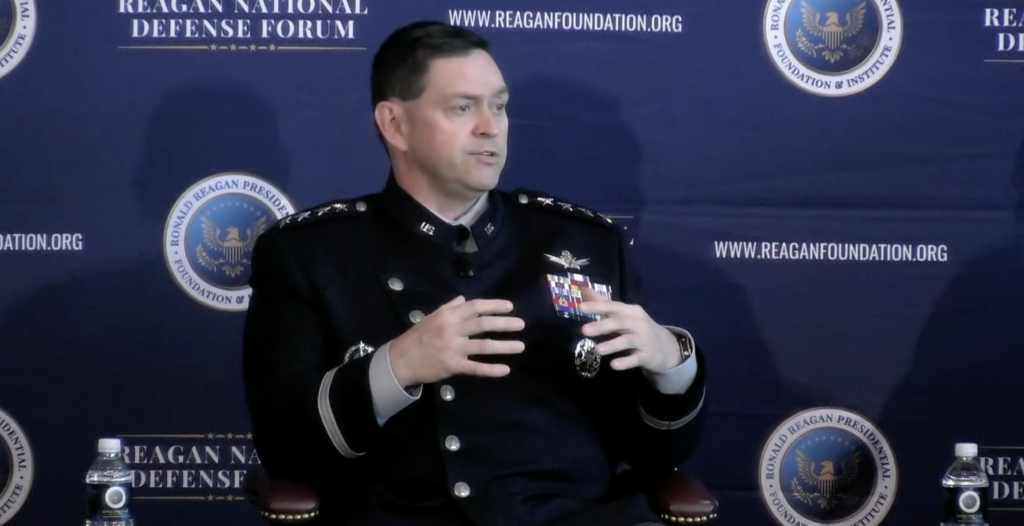Satzman: The value of space “has been proven out”
WASHINGTON — The war in Ukraine has put on display military forces’ growing reliance on satellites and has created incentives to disrupt opponents’ access to space systems, Gen. B. Chance Saltzman, chief of space operations of the U.S. Space Force, said Dec. 3.
“I think this modern war that we’re seeing play out in Ukraine is just indicative of what we can expect in the future,” Saltzman said during a panel session at the Reagan National Defense Forum in Simi Valley, California.
Saltzman’s two main takeaways from the conflict in Ukraine: the value of space “has been proven out,” and space is “clearly a contested domain.”
Whether it’s satellite-based communications, imagery, early warning of missile launches, or positioning navigation and timing, “the capability that space offers has demonstrated its value so much so that both sides are engaged in trying to counter those capabilities and deny those advantages to the opponent,” he said.
Saltzman, who assumed command of the Space Force Nov. 2, said a top priority for the Department of Defense is “to protect our capabilities in space.”
The Space Force is working on that, he said, but it will take years.
The satellites the United States military has on orbit today are high-performing machines and would be difficult to replace if an enemy took one down. Before China in 2007 demonstrated an anti-satellite weapon, the thinking in the Pentagon was to make satellites as capable as possible to minimize the number that needed to be launched, Saltzman explained.
After China’s ASAT test, it became clear that relying on a small number of big-ticket satellites “was not inherently resilient,” he said.
“If you can just take out a few satellites and radically degrade the capabilities, you don’t have a resilient architecture,” Saltzman added. This has to be the “starting point of a discussion that we need to build a new type of space capabilities with resiliency baked in from the beginning.”
With these challenges in mind, the Space Force is looking to deploy newer types of satellites but also train operators for the contested space environment, he said.
“If we think we can just buy the best arsenal, we are only going to have half of the equation met,” said Saltzman. The other pieces are “the tactics, the training, the experience, the ability to work hand in glove with allies and partners. That takes a lot of time and energy and a different set of tools … All of that is critical to turning an arsenal into a military force.”
